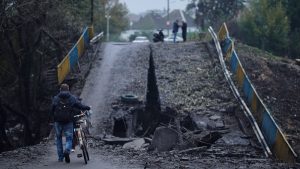After Drone Strike, Chernobyl’s Protective Arch Needs Fixing
Others are reading now
Nearly four decades after the Chernobyl nuclear disaster, the site still demands attention.
The danger may no longer come from the reactor itself, but from new threats in the form of war.
Ukraine is now dealing with one of those threats after a Russian drone strike damaged a key safety structure earlier this year, writes the Kyiv Independent.
On April 12, Ukraine’s Environment Minister, Svitlana Hrynchuk, said repairs are underway at the Chernobyl nuclear plant.
Also read
In February, a Russian drone hit the containment structure built to keep radiation from leaking.
That structure, a massive steel arch, was finished in 2019. It covers the old sarcophagus, which was quickly built after the 1986 explosion.
The drone created a hole in the outer shell of the arch. It also exploded inside the structure. Plant officials confirmed the damage.
Russia’s Foreign Ministry denied responsibility and called the incident a provocation.
Speaking at the site, Hrynchuk said the strike reduced the arch’s ability to contain radiation.
An investigation is now in progress to understand the full extent of the damage.
Experts from Ukraine and other countries are working together on the analysis. The results are expected in May.
Hrynchuk stressed the importance of fixing the damage. She said keeping the site safe from radioactive leaks is a top priority.
The European Bank for Reconstruction and Development is also involved. So are some of the original engineers and companies that built the arch.
The minister also used the visit to launch a new solar energy plant nearby. The small station, with 0.8 megawatts of capacity, will help supply power to the Chernobyl area.
She said the goal is to turn the exclusion zone into a space for renewal, not fear.
“This land is perfect for renewable energy,” she said. “It’s time we put it to use for something positive.”
The situation shows that even decades later, Chernobyl remains a symbol of both danger and recovery. It’s also a reminder of how war can reopen old wounds.



